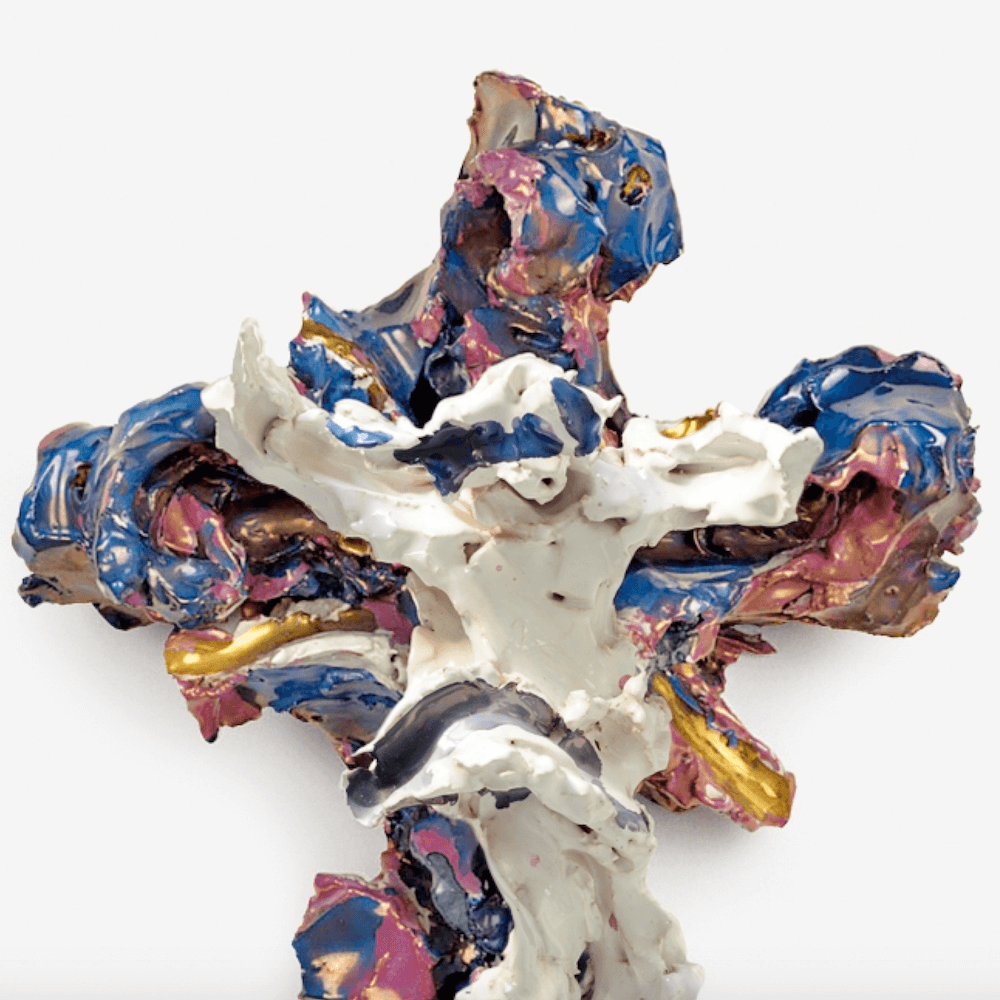The following is an essay by art critic D. Creahan about the exhibition la mia ceramica at Galerie Max Hetzler (Paris, June 4 – July 16). The piece originally ran in Art Observed and we are running selections from it here (do read his full piece at Art Observed), along with additional commentary by CFile Chief Editor Garth Clark. Garth’s up first!
PARIS, France — This exhibition may or may not be influenced by CERAMIX, de Rodin à Schütte, the exhibition that traveled from the Bonnafanten Museum in Maastricht to the Maison Rouge, Paris et Sèvres in Paris. It has recently closed. La mia ceramica is not definitive, nor can it be; the subject is too vast (the scattershot in Ceramix was its great weakness).
That said, the curator could not have done better! Every piece is an excellent example, and some of artists’ additions to the list are surprising. There is strong connective tissue between the spirited hands-on sense of material and earthy expressionism each work reveals, bonding the artists to a common aesthetic.
It is named after Lucio Fontana’s ceramic manifesto, “La Mia Ceramica” (published in “Tempo”, Milano, September 21, 1939), written while he was a visiting artist at the Sèvres Manufactory. In this he infamously declares, “I am not a ceramist!” Basically what he was saying is that “I am not a decorative artist.” But his ceramic legacy continued to the year of his death, when in 1968 he presented his first works in porcelain.
— Garth Clark is the Chief Editor of cfile.daily.

Lucio Fontana, Crocefisso, 1950-55, colored and glazed ceramic, 50 x 35 x 18 cm. Photographs courtesy of Galerie Max Hetzler.

Lucio FOntana, Drago 1949-50, colored ceramic glazed with silver and a brass base, 39 x 105 x 28.5 cm

Pablo Picasso, Pichet, ca. 1948; white terra cotta, partially painted with paraffin, engobes and enamel, partially glazed; 23 x 15.5 x 23 cm. Click to see a larger image.
The following are selections from D. Creahan regarding the same exhibition.
Exploring recent trends in the use of ceramics and pottery in contemporary art practice, Galerie Max Hetzler has launched a group exhibition exploring not only current approaches and interests in the ancient art of ceramics, but equally placing it in the context of 20th and 21st Century practice. Delving into the historical undertones and evolutions of the ceramic craft in the hands of those not originally trained in the medium, the show moves from the early explorations of Lucio Fontana, through a range of works made in the past five years.
This interest in the process itself, from sculpting to application of glaze and colorings, to the final process of firing, ultimately defines the contemporary interest in this mode of practice, with the artists on view embracing the act of ceramic construction as a specific set of boundaries to work within. Sterling Ruby, for instance, allows the act of construction, and the often brittle nature of the object to create basins of materials reclaimed during the course of its production, welcoming trial and error into the final object, while Edmund de Waal’s minimal structures emphasize the object’s relation to space and exhibition, crafting stark white and black environments that reduce the ceramic to an element in exchange with its environment. Elsewhere, Lynda Benglis’s works push the object to its linguistic breaking points, hinting at specific subjects or situations while using the limitations of ceramic-making to further abstract any initial reading. By contrast, Günther Förg and Liz Larner’s minimal pieces hint at their interests in the application and gradual alteration of the painterly mark, as if grafting color field paintings over the object’s surface.

Lynda Benglis, Acolapissa, 2013, glazed ceramic, 49.5 x 71.1 x 30.5 cm. Click to see a larger image.

Navid Nuur, Rituals of the Rational, late-Cretaceous—2016, wood-fired ceramic made of various stoneware clays, coprolite, various types of wood, palm tree ashes, and seashells, 21.5 x 18 x 18 cm
Throughout, the ceramic object is posed as a site for the intersection of forces and gestures, variations in approach and use that ultimately rely on interactions of heat and earth, paint, glaze and other material to realize a final, hybridized format. It’s no wonder then, that this group of artists, so often interested in the collision of forces and forms, might find ceramic as a timely form for investigation.
D. Creahan is a critic for Art Observed and for other journals.
Do you love or loathe these works of contemporary ceramic art? Let us know in the comments.
















Add your valued opinion to this post.